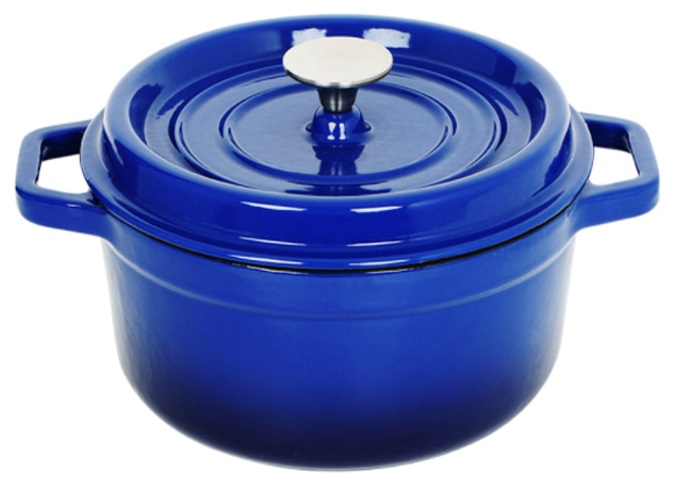Induction-Compatible Cast Iron Skillets Production Process and Quality Assurance Techniques
The Manufacturing Process of Induction Cast Iron Skillets
Induction cast iron skillets are renowned for their durability, heat retention, and versatility in the kitchen. These skillets are a staple in many households and professional kitchens, valued for their ability to withstand high temperatures and provide even cooking. The production of these skillets involves several intricate processes, from raw material selection to finishing touches, ensuring that every skillet meets high-quality standards.
Raw Material Selection
The journey begins with selecting high-quality pig iron and scrap iron, which are the primary raw materials for cast iron. Manufacturers often source pig iron due to its high carbon content, which is crucial for creating the right hardness and brittleness in the finished product. The quality of raw materials directly impacts the performance and longevity of the skillet. In addition to iron, additives such as silicon and other alloys may be incorporated to enhance specific characteristics, such as resistance to rust and improved casting properties.
Melting and Pouring
Once the raw materials are prepared, they are melted in a large induction furnace, which offers several advantages, including energy efficiency and precise temperature control. The induction melting process heats the iron quickly, reducing the overall production time. The molten iron is poured into molds to form the basic shape of the skillet. Molds are typically made from sand and are designed to closely mimic the final product's dimensions and surface texture, ensuring consistency and quality.
Cooling and Solidification
After pouring, the cast iron must cool to solidify. This process is critical, as it influences the skillet's microstructure and mechanical properties. Depending on the design, cooling can take place in various ways, including air cooling or water quenching. Cooling must be carefully controlled; rapid cooling can lead to cracking, while slow cooling may result in undesirable microstructural changes. Once cooled, the skillet undergoes a process called shakeout, whereby the mold is removed, leaving the raw cast iron skillet.
induction cast iron skillet factory

Machining and Finishing
The next step in the production process involves machining, where any rough edges and excess material are removed. Manufacturers use various tools like lathes and grinders to create a smooth, even surface. This step is crucial for ensuring that the skillet is both aesthetically pleasing and functional. For induction skillets, specific attention is paid to the bottom surface, as it directly affects the skillet's compatibility with induction cooktops. A flat, smooth bottom ensures optimal contact with the cooking surface, promoting efficient heating.
Following machining, the skillets undergo a thorough cleaning process to eliminate any sand residue and contaminants. This is often achieved using a combination of washing and abrasive materials. Once clean, the skillets are inspected for quality assurance. Ongoing quality control measures ensure that any defects are identified and corrected before moving to the next stage.
Seasoning and Packaging
Before being packaged, induction cast iron skillets are typically seasoned with vegetable oil. Seasoning involves applying a thin layer of oil and heating the skillet to create a non-stick surface. This process is essential, as it not only enhances cooking performance but also helps prevent rust. After seasoning, each skillet is carefully inspected again to ensure it meets the manufacturer’s quality standards.
Finally, the skillets are packaged for distribution. Packaging is not just about protection during transport; it also provides essential information about the product, including care instructions and warranty details. The packaging should reflect the quality and craftsmanship of the skillet, appealing to both consumers and retailers.
Conclusion
The manufacturing process of induction cast iron skillets is a remarkable blend of traditional craftsmanship and modern technology. From the careful selection of raw materials through to the final seasoning and packaging, every step is designed to create a premium product that stands the test of time. As consumers continue to embrace cast iron cookware for its myriad benefits, manufacturers remain committed to producing skillets that meet the highest standards of quality and performance.
-
Why Ecast Iron Grills Are Heating Up Outdoor CookingNewsMay.23,2025
-
Why Cast Iron Cookware Belongs in Every Kitchen?NewsMay.23,2025
-
Why Cast Iron Bakeware Is a Timeless Kitchen EssentialNewsMay.23,2025
-
Upgrade Your Kitchen with Cast Iron Bakeware SetsNewsMay.23,2025
-
Master Outdoor Cooking with the Camping Dutch OvenNewsMay.23,2025
-
Casserole Cast Iron Cookware for Rich, Slow-Cooked FlavorNewsMay.23,2025
-
The Ultimate Guide to Cast Iron Deep Dish Pizza PerfectionNewsMay.21,2025
